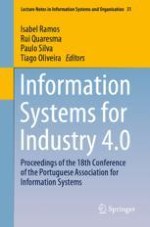2019 | OriginalPaper | Chapter
Shedding Light on Shadow IT: Definition, Related Concepts, and Consequences
Authors : Gabriela Labres Mallmann, Aline de Vargas Pinto, Antônio Carlos Gastaud Maçada
Published in: Information Systems for Industry 4.0
Publisher: Springer International Publishing
Activate our intelligent search to find suitable subject content or patents.
Select sections of text to find matching patents with Artificial Intelligence. powered by
Select sections of text to find additional relevant content using AI-assisted search. powered by
